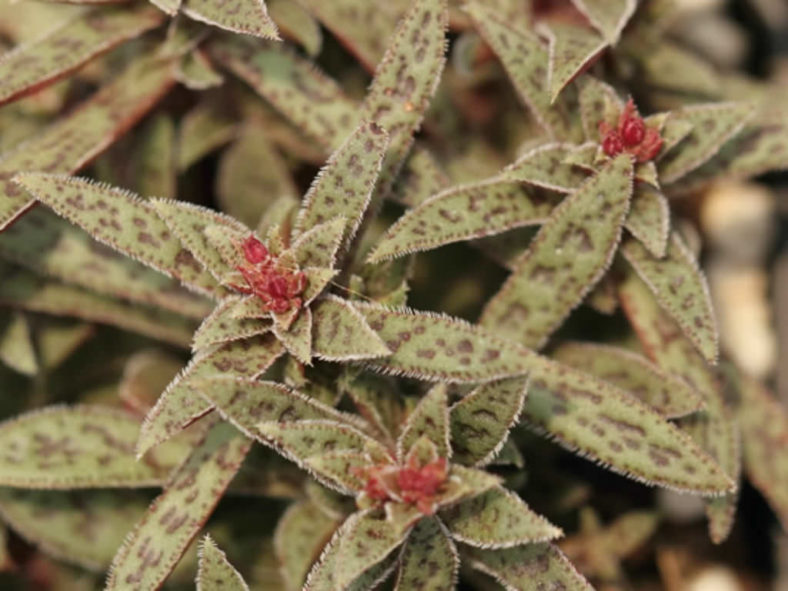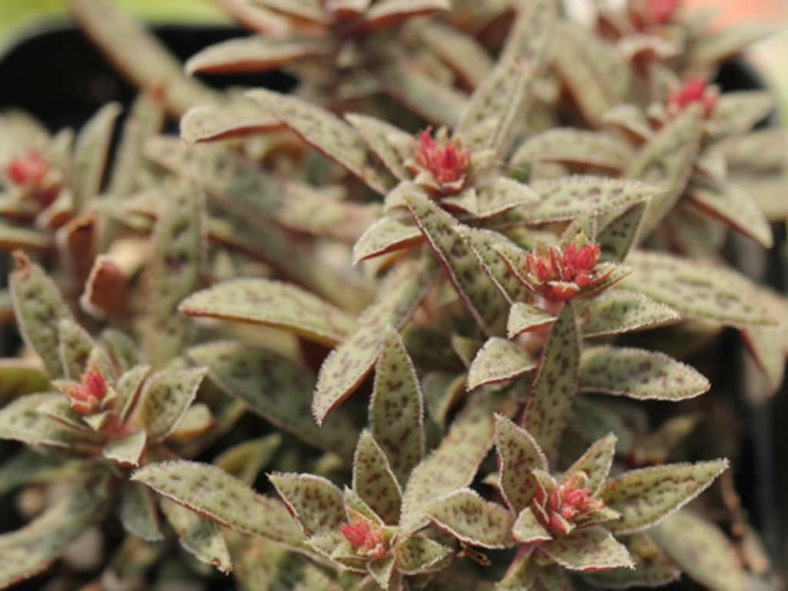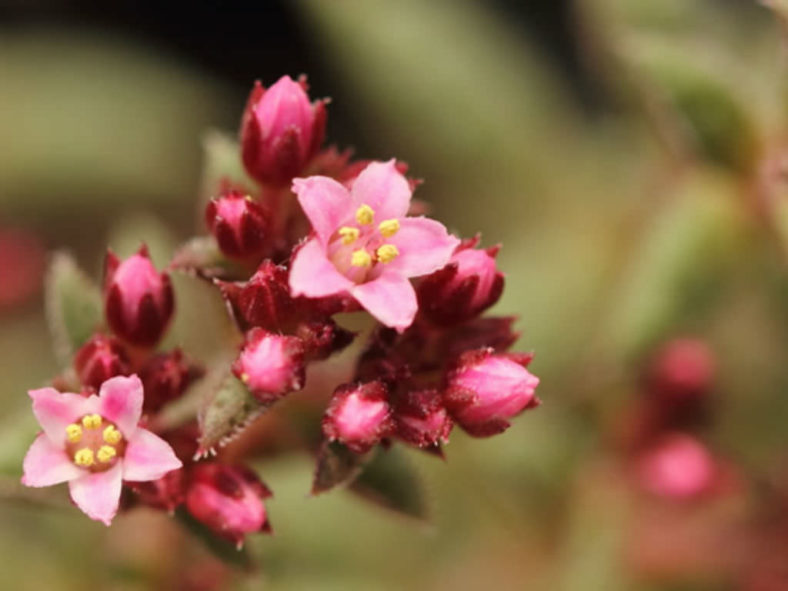Scientific Name
Crassula exilis subsp. picturata (Boom) G.D.Rowley
Synonym(s)
Crassula picturata
Scientific Classification
Family: Crassulaceae
Subfamily: Crassuloideae
Genus: Crassula
Etymology
The subspecific epithet "picturata" (pronounced "pik-tur-AT-uh") means "decorated with color, variegated, embroidered" and refers to the striking red markings on the leaves of this species.
Origin
Crassula exilis subsp. picturata is native to South Africa (Eastern Cape).
Description
Crassula exilis subsp. picturata is a small, annual or short-lived perennial succulent with numerous stems that grow from a vertical, woody rootstock, forming tufts. The leaves are rather narrow, pointed, and spirally arranged in rosettes, measuring up to 1 inch (2.5 cm) in length.
This subspecies is distinguished by its leaves, which are rarely fleshy and are adorned with scattered red spots scattered with red spots, as well as by its upright flowering stem, which has a hairy texture.
The flowers are small and can be either white or pink, typically blooming in late summer and fall.

Hardiness
USDA hardiness zones 9b to 11b: from 25°F (-3.9°C) to 50°F (10°C).
How to Grow and Care
Crassulas are easy to grow, but they are susceptible to mealybugs and fungal diseases. As with all succulents, overwatering is sure to be fatal, so err on the side of too dry rather than too wet. Never let your plant sit in water. If you water from beneath by allowing the plant to sit in a saucer of water, make sure to pour off any excess water after a few minutes.
These succulents are generally started by division, offsets, or leaf cuttings. Crassulas can be easily propagated from a single leaf. Sprout leaves by placing them into a potting mix for succulents, then cover the dish until they sprout.
Repot as needed, preferably during the warm season. To repot your Crassula, ensure the soil is dry, then gently remove the pot. Gently remove the old soil from the roots, ensuring you also remove any rotted or dead roots in the process. Treat any cuts with a fungicide. Place the plant in its new pot and backfill with potting soil, spreading the roots out as you repot. Leave the plant dry for a week or so, then begin to water lightly to reduce the risk of root rot.
Learn more at How to Grow and Care for Crassula.
Links
- Back to genus Crassula
- Succupedia: Browse succulents by Scientific Name, Common Name, Genus, Family, USDA Hardiness Zone, Origin, or cacti by Genus
Photo Gallery
Click on a photo to see a larger version.

